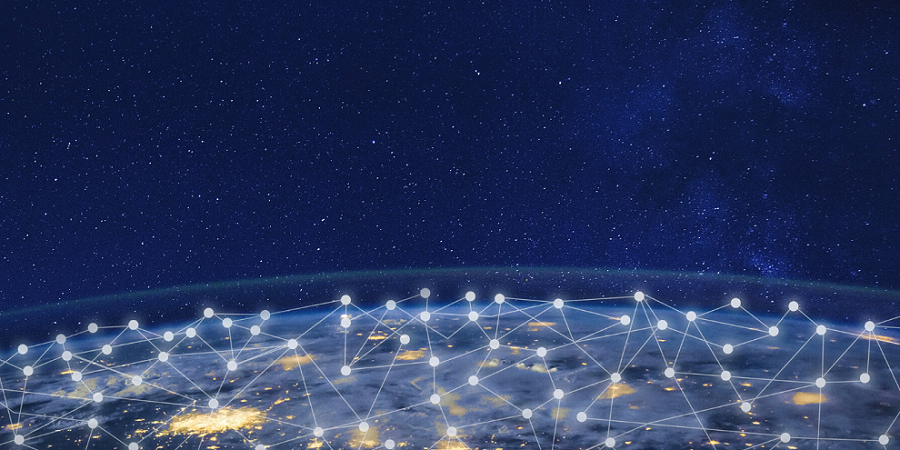Growth of informational technologies significantly affected human lifestyle who now daily performs operations in various directions by means of personal computer or telephone. It is important for us to have remote access to real time information and services – this simplifies movement, saves time, energy and money. Brands and companies try to respond to needs of consumer. In future strategies of companies their service or product definitely implies remote service too if not fully, but at least with physical sales as this acceleration makes business change communication algorithm with consumer, it is not enough anymore the consumer to go to the brand or vice versa, the brand to go to consumer with its offers, in compliance with modern challenges, when consumer moves, product he loves and needs moves along with him.
Remotely received service is eventually developing in Georgia. As we are getting used to standing in endless lines and checking quality of product or instructions on use at site, it is hard to adjust to psychological fact that in reality, companies are well-aware (based on current experience and observation) what to offer us, how to make amends or change our attitude if we are not satisfied. Main challenge companies face in terms of offering remote offer is the first try of consumer when he begins to realize benefits caused by saving time and receiving comfort, then the challenge is active involvement in his everyday life remotely. To this point, in our reality delivery companies and banking fields are the most successful in implementing this concept.
Daily renewable pace and needs of life results in increased requirements of the consumers towards banking field: convenience of working with the bank, quick access to bank service and promptness of service. In order to meet these requirements, bank needs to offer service and products in every single space where client expects it. Today, this is activation of remote service.
Imagine buying new shoes and leaving house in the morning thinking:
- “Want to do it all”
It is no longer enough for the client to receive this or that banking service – now clients are interested in the quality of terms of obtained service and most importantly time spent on receiving the said service. Nowadays banks offer quite a broad spectrum of remote services: internet and mobile banking, outdoor services (terminals, ATMs), telephone and video banking, you can use these services to pay bills, make necessary transfers, receive information on bank products or access to products such as deposit, loan, credit cards, etc. In order to perform each operation, you will need exactly that amount of time you can spare.
- „Need to concentrate and localize”
Clients find it more and more important to minimize live interaction with banks, to avoid lines and communication with operators and at the same time, to increase opportunity of using the fastest and most reliable partner – yourself; as in the concept of modern bank service, consumers know best during what part of the day, how fast and how simply and usefully they can perform bank operation they need.
- “Spend less”
Remote service acts as an alternative of the value of so called tear of shoes. Consumers no longer need to visit the bank – spend money for commuting and wasting time because in the world of technologies time is equivalent to money and each minute wasted on standing in line or waiting for operator is lost GEL or USD for consumer.
Bank representatives try not to fall behind consumers’ thoughts and transform along the way in terms of remote service. Beyond consumers’ interests, switching to remote service is important for banks as geographical expansion of bank branches cannot be unlimited. Together with accelerated development of technologies, banks try to come closer to client on the expense of technological achievements which is managed through remote methods of specific bank services; furthermore, technological development and switching clients to self-service reduces costs of banks in terms of human resources, this enables them to invest this financial resource in improvement of the said technologies and fast development and walk one step ahead to competitors.
For those banks which already started development of remote services, created and improved remote products and defined further improvement of remote service as a priority in strategy of upcoming years, this current crisis will accelerate multi-year strategic plan and minimize it to months, consumer will have to better learn how to use remote services under force-majeure and bank will try to make this learning and testing process simpler and user-friendly, exactly actively involved consumer will accelerate the development process.
As for those banks for which switching to remote service was future perspective, this situation will become a huge challenge. For example, banks that have special segment (age or social segment) will have to do it altogether – manage quick technological development and ensure development of consumer too, teach clients use of remote channels, this is a double objective but manageable and considering future tendencies, this is what will bring benefit for everyone in the end – for bank and for consumer.
As estimated by analysts of Juniper Research[i], as of 2018, 2 billion consumers had access to bank service by means of various gadgets: smartphone, tablet, PC or smart watch. Human life with global ambitions was localized to the specific gadgets, from the agenda saved in smartphone to information on persons that are part of network, from the specialist of specific field to alter-banker. As quality/desire of remote engagement is this high and establishment and implementation of innovative products is done through people (bank employees/clients), companies have to start big things in a simple way – by caring about “shoes” of service personnel and consumer – time, energy, money.
[i] https://www.juniperresearch.com/press/press-releases/digital-banking-users-to-reach-2-billion






